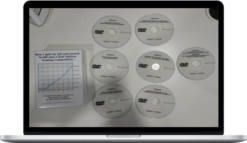Finastic – Liquidity Playbook
$49.99 $35.00
Delivery: Within 7 days
Description
Finastic – Liquidity Playbook
Liquidity in forex refers to how easily a currency pair can be bought or sold in the market without causing a significant impact on its exchange rate. High liquidity means there are many buyers and sellers, leading to smooth and quick transactions, while low liquidity can lead to price slippage and difficulty in executing trades.
What You’ll Learn In Liquidity Playbook
- Market Liquidity: The overall volume of currency being traded. Higher market liquidity means more participants (banks, institutions, traders), ensuring smoother trade execution.
Example: Major currency pairs like EUR/USD, USD/JPY, or GBP/USD typically have high liquidity.
- Broker Liquidity: The liquidity provided by brokers based on their network of liquidity providers. Brokers may offer better spreads if they have access to deep liquidity pools.
Example: ECN brokers, which aggregate liquidity from multiple sources, typically provide better liquidity conditions.
- Institutional Liquidity: The liquidity provided by large financial institutions like banks and hedge funds, which trade in significant volumes, influencing market conditions.
Example: When major banks trade large amounts of a currency, it adds to the overall liquidity in that currency.
- Market Depth Liquidity: Refers to the amount of buy and sell orders at different price levels in the market. Deeper market depth means that large orders can be filled without much impact on price.
Example: A deep order book in EUR/USD will allow large orders to be executed without significant slippage.
- Session Liquidity: Liquidity can vary based on the forex trading sessions (e.g., London, New York). Typically, major sessions like London and New York overlap offer higher liquidity.
Example: Liquidity peaks during the overlap of the London and New York sessions, making it easier to execute trades at tighter spreads.
- These points highlight the importance of liquidity in forex and how different factors influence the availability of liquidity in the market.
Delivery Policy
When will I receive my course?
You will receive a link to download your course immediately or within 1 to 21 days. It depends on the product you buy, so please read the short description of the product carefully before making a purchase.
How is my course delivered?
We share courses through Google Drive, so once your order is complete, you'll receive an invitation to view the course in your email.
To avoid any delay in delivery, please provide a Google mail and enter your email address correctly in the Checkout Page.
In case you submit a wrong email address, please contact us to resend the course to the correct email.
How do I check status of my order?
Please log in to TradingAZ account then go to Order Page. You will find all your orders includes number, date, status and total price.
If the status is Processing: Your course is being uploaded. Please be patient and wait for us to complete your order. If your order has multiple courses and one of them has not been updated with the download link, the status of the order is also Processing.
If the status is Completed: Your course is ready for immediate download. Click "VIEW" to view details and download the course.
Where can I find my course?
Once your order is complete, a link to download the course will automatically be sent to your email.
You can also get the download link by logging into your TradingAZ account then going to Downloads Page.
Related products
Total sold: 6







